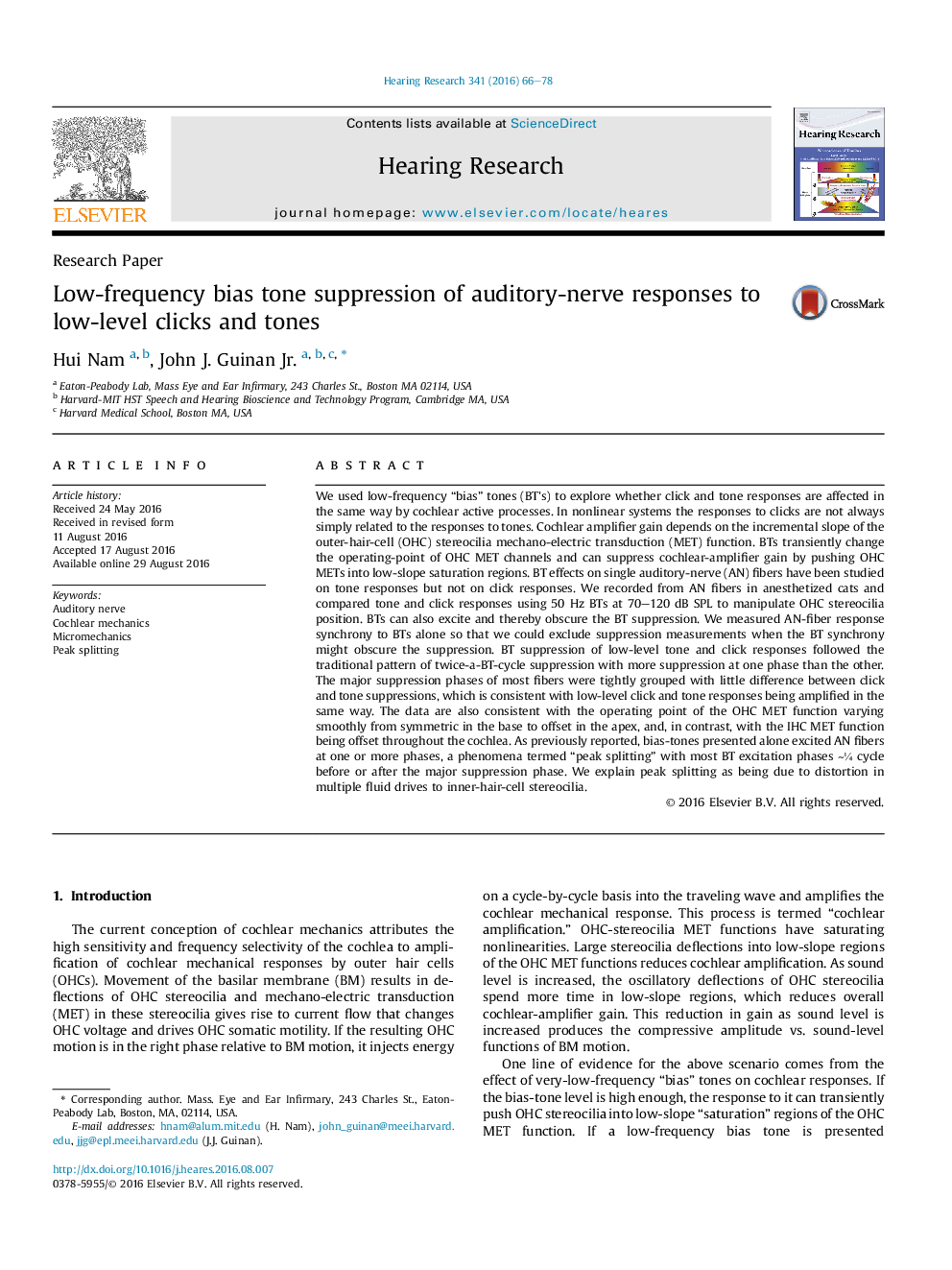| کد مقاله | کد نشریه | سال انتشار | مقاله انگلیسی | نسخه تمام متن |
|---|---|---|---|---|
| 6286868 | 1615559 | 2016 | 13 صفحه PDF | دانلود رایگان |
- Do low-frequency “bias” tones (BTs) suppress tone and click responses similarly?
- BT-induced synchronization index (SI) was measured in cat auditory-nerve fibers.
- After excluding BT excitation, click and tone BT-suppression phases were similar.
- BT effects suggest systematic variation in hair cell transduction along the cochlea.
- Distortion in IHC drives may account for auditory-nerve-fiber peak splitting.
We used low-frequency “bias” tones (BT's) to explore whether click and tone responses are affected in the same way by cochlear active processes. In nonlinear systems the responses to clicks are not always simply related to the responses to tones. Cochlear amplifier gain depends on the incremental slope of the outer-hair-cell (OHC) stereocilia mechano-electric transduction (MET) function. BTs transiently change the operating-point of OHC MET channels and can suppress cochlear-amplifier gain by pushing OHC METs into low-slope saturation regions. BT effects on single auditory-nerve (AN) fibers have been studied on tone responses but not on click responses. We recorded from AN fibers in anesthetized cats and compared tone and click responses using 50 Hz BTs at 70-120 dB SPL to manipulate OHC stereocilia position. BTs can also excite and thereby obscure the BT suppression. We measured AN-fiber response synchrony to BTs alone so that we could exclude suppression measurements when the BT synchrony might obscure the suppression. BT suppression of low-level tone and click responses followed the traditional pattern of twice-a-BT-cycle suppression with more suppression at one phase than the other. The major suppression phases of most fibers were tightly grouped with little difference between click and tone suppressions, which is consistent with low-level click and tone responses being amplified in the same way. The data are also consistent with the operating point of the OHC MET function varying smoothly from symmetric in the base to offset in the apex, and, in contrast, with the IHC MET function being offset throughout the cochlea. As previously reported, bias-tones presented alone excited AN fibers at one or more phases, a phenomena termed “peak splitting” with most BT excitation phases â¼Â¼ cycle before or after the major suppression phase. We explain peak splitting as being due to distortion in multiple fluid drives to inner-hair-cell stereocilia.
Journal: Hearing Research - Volume 341, November 2016, Pages 66-78
